Chrysler Valiant Charger 770: Buyers Guide
 Valiant Charger 770
Valiant Charger 770

 Valiant Charger 770
Valiant Charger 770
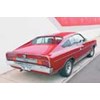
 Valiant Charger 770
Valiant Charger 770
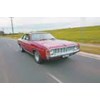
 Valiant Charger 770
Valiant Charger 770
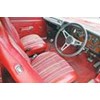
 Valiant Charger 770
Valiant Charger 770
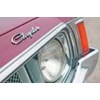
 Valiant Charger 770
Valiant Charger 770
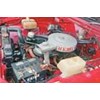
 Valiant Charger 770
Valiant Charger 770
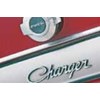
 Valiant Charger 770
Valiant Charger 770
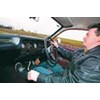

|
|
Valiant Charger 770
|

|
|
Valiant Charger 770
|

|
|
Valiant Charger 770
|

|
|
Valiant Charger 770
|

|
|
Valiant Charger 770
|

|
|
Valiant Charger 770
|

|
|
Valiant Charger 770
|

|
|
Valiant Charger 770
|
Chrysler's upmarket coupe is a relative bargain amongst homegrown classics.

|
|
Buyer's Guide: Valiant Charger 770
|
Chrysler Valiant Charger 770
For the first decade of its participation in the Australian 'family' car market, Chrysler was a citadel of conservatism. Then, in August of 1971, the Charger arrived.
Overnight, or so it seemed, 'Hey Charger' became a catch cry and chunky two-door Valiants with engine bays brimful of Weber carburettors threatened to end Holden/Ford domination of the annual Bathurst 500
Of course, the racy 'Six-Pack' Chargers were just too specialised to sell in serious quantities and the base-model with its 3.5-litre 'Hemi' six and three-on-the-tree gearshift was a sports coupe in name alone. Salvation came in the shape of the Charger 770, with all the ingredients required to attract those who might otherwise have bought a G/S pack Fairmont on HQ Monaro.
At release, the VH Charger 770 was available with Chrysler's long-serving 5.2-litre 'Fireball' V8 or two versions of the 4.3-litre 'six'. Automatic transmission was standard with four-speed manual available but rarely specified.
Standard equipment included carpet an alloy-spoked steering wheel, clock, pressed steel sports wheels and vinyl body accents. Radial-ply tyres - optional on early cars - and heavier front torsion bars combined to deliver the 770 a ride/handling advantage over Charger models.
'Wheels' magazine - which presented its 1971 'Car of the Year' to the Charger - came up with the following summation.
"Tastefully padded door trim, good quality carpeting and a generally solid feel about the interior make this a pleasant car to be in as well as drive."
As far as the driving went, 'Wheels' discovered the 770 with its standard anti-roll bar delivered ride quality that was "almost in the European class". Acceleration from the lazy, 170kW V8 wasn't in the rocketship category with the 5.2-litre car reaching 60mph (96km/h) in 9.6 seconds and recording the same 16.8 second time for the 0-400 metre sprint as a 4.3-litre XL automatic.
The difference lay in the cars' character. The 770 was blessed with additional sound-deadening, better seats and those plush carpets. It weighed 1430kg compared to the six-cylinder XL's 1330kg and consumed fuel at a rate of 18.5L/100kms. This was a well-appointed, stylish mode of transport aimed at people for whom appearances carried greater weight than performance. With one notable exception.
Having failed in its ploy to build a V8 for Bathurst 1972, Chrysler fitted its stock of imported 5.5-litre, 340 cubic inch engines into a Charger to create the E55. These came with mandatory three-speed automatic transmission and a natty turned metal dash, cost $4850 compared to the $4175 being charged at the time for a 5.2-litre 770 and today are worth considerably more money than the regular model. Following the exhaustion of '340' engine stocks, a 6.2-litre '360' became optional.
The VJ that appeared in 1973 and 1975-release VK brought minimal change to the 770 formula. As a sign of changing times, VJs came with electronic ignition while the VK was equipped with a 'Fuel Pacer' - a blinking red light mounted on the driver's side front mudguard that wagged an electronic finger at those who trod too heavily on the throttle.
With petrol prices galloping and Chrysler Australia sinking into financial trouble - see Mitsubishi, nothing's changed - the Charger range was among the first of the company's products to be 'rationalised'.
The CL range released in 1976 dispensed with all but the 770 model Charger. A new grille with centre divider and four headlamps enlivened the car's appearance but performance suffered due to compliance with the new ADR27A emission standards. Priced at $7050, a V8-engined 770 offered value when compared to a Regal sedan costing $8300 or Holden's glitzy LE Monaro at more than $11,000.
Additional brightwork and cloth seats in place of the earlier cars' slippery vinyl were the CL's only noticeable differences and it just wasn't enough to save the Charger from oblivion. The revised suspension geometry introduced to the Valiant range in April 1978 wasn't applied to the Charger and production of the car once touted as Chrysler's saviour in Australia ended with the arrival in November of the CM Valiants.
ON THE ROAD
Suspension condition, the type of shock absorbers and even tyres can radically influence these cars' ability to deliver their best in a given situation.
Personal experience recalls a 265-engined (4.3-litre) car wearing optional ROH alloy wheels and carrying Uniroyal Wildcat tyres. The suspension had been stiffened and on decent-quality bitumen roads it was thoroughly enjoyable, with minimal understeer or body roll and decent ride quality. But toss in a light shower of rain and it would go straight ahead - or sideways - without discernable warning.
Our featured 770 is of similar specification and exhibits the same behavior if treated with distain on wet roads says Marcus Taylor, who has owned the rare VK model for the past two years.
"It's got the two-barrel '265' engine with a four-speed (manual) transmission and the optional limited slip differential, so there's plenty of power and it's great fun provided you remember that the back end will break away if you push it a bit too hard in the rain," Taylor warned.
At a time when buyers' attention is more focused on the fuel consumption than outright performance, Taylor has good and bad news for potential Charger owners.
"On the open road, its economy with the manual transmission is very good but in stop-start traffic driving to work it uses about ten litres during a 50 kilometre round trip."
Shorter drivers may feel a little claustrophobic due to the Charger's low seating position and limited rear vision. A left-hand door mirror is essential for safe lane changing. The cloth-covered seats fitted to CL-series 770s are apparently a good deal more cosy than the vinyl buckets supplied with preceding models. The rear seat is uncomfortable on all but brief journeys, but there endeth most of the bad news.
Whether you've chosen a 4.3-litre 'six' or V8 version, the Charger delivers excellent and effortless performance. Torque delivery from either engine is outstanding, minimizing the need to floor the throttle when overtaking. The vast majority of 770s come without power steering and while 4.7 turns lock-to-lock might appear undergeared, the unassisted system delivers good feel and directional stability.
Brakes are a bit like suspension; dependent on condition and the demands placed upon them. Under most circumstances, the disc front/drum rear setup works just fine with minimal pedal pressure. Get the brakes hot and wheels - usually the front - will start to lock. However, when the front discs are cold or it's raining, rear wheel lockup can be a problem.
BUYING
770 model Chargers have only recently begun to generate enthusiast interest, so if you bought one for the $5000 they were making a few years back it will have more than earned its keep.
Prices for VH-VJ cars range from $4000 for an untidy but roadworthy example to $12,000 for a '318' V8 in pristine condition. Rarity dictates that the mid-1970s VK is worth slightly more than earlier models. Six-cylinder cars are still slightly cheaper than V8s but that may change if $1.10 per litre fuel prices become entrenched. CL Chargers lose out in performance and looks to preceding models and cost around 15 percent less.
Prising an excellent example of the scarce E55 or 340 SE cars away from its current owner will be difficult and cost in the vicinity of $16,000.
770 model Chargers have only recently begun to generate enthusiast interest, so if you bought one for the $5000 they were making a few years back it will have more than earned its keep. Prices for VH-VJ cars range from $4000 for an untidy but roadworthy example to $12,000 for a '318' V8 in pristine condition. Rarity dictates that the mid-1970s VK is worth slightly more than earlier models. Six-cylinder cars are still slightly cheaper than V8s but that may change if $1.10 per litre fuel prices become entrenched. CL Chargers lose out in performance and looks to preceding models and cost around 15 percent less. Prising an excellent example of the scarce E55 or 340 SE cars away from its current owner will be difficult and cost in the vicinity of $16,000.
BUYER CHECKLIST
Body
Poor-quality accident repairs, rust and neglect all manifest in problems for Charger buyers. Leaky windscreen seals are common, so lift the carpets to check for moisture or rust. Replacement floor pans are available, as are boot floors. Rust also lurks in the sills, sub-frame mounting points, firewall, door bottoms, window surrounds and turret. Inspect the front chassis rails for cracks - especially around the steering box mounting points. The heavy doors can droop due to worn hinges but repair kits are available. Reproduction glass, body rubbers and lenses are being made, however replacement panels and mouldings will need to be sourced second-hand and can be expensive.
Engine & Transmission
The engines (six-cylinder and V8) fitted to these Chargers are among the world's most durable power units. Distances of 300,000kms are possible before serious repairs are needed. Oil leaks and timing chain noise are annoyances and usually not indicative of serious problems. Be wary of cars with after-market triple-carburettor conversions as tuning is a chore and the linkages complex. The Borg-Warner automatic transmissions fitted to most 770s are even more bombproof than the engines. Make sure that upshifts occur smoothly.
Suspension & Brakes
All Chargers and especially those fitted with V8 engines suffer front-end 'droop'. This is often due to worn suspension bushes or torsion bars that have sagged due to age and use. The bars can be adjusted and heavy-duty replacements are available from suppliers in the USA. According to Graeme Lewis of Des & Gray's Automotive Services in the Melbourne suburb of Ferntree Gully, a full front-end rebuild will cost more than $1000. Brake parts are freely available and repairs straightforward.
Interior & Electrics
The vinyl seats used in 770s often show age cracks and will need to be repaired or recovered in cloth. Check that the seats lock into position after being tilted and that the frames aren't cracked. Window winders are often sticky. If the ignition key is difficult to turn, the barrel may be due for replacement and new parts aren't available.
SPECIFICATIONS
Valiant Charger 770
Production: 10,000 (approx) - all models
Body: Steel integrated body/chassis, two-door coupe
Engine: 4.0 or 4.3-litre in-line six cylinder, 5.2, 5.5 or 6.2 litre V8. All overhead valve with carburettors
Power & Torque: 173kW @ 4800rpm, 459Nm @ 2400rpm (VH 5.2-litre V8), 162kW @4800rpm, 354Nm @ 3000rpm (VK 4.3-litre six)
Performance: 0-100km/h 10.2 seconds, 0-400 metres 16.8 seconds (VH 5.2 V8) 0-100km/h 10.9 seconds, 0-400metres 17.9 seconds (CL 4.3 six)
Transmission: three-speed automatic or four-speed manual
Suspension: Front: independent with torsion bars, telescopic shock absorbers and anti-roll bar. Rear: semi-elliptic springs with telescopic shock absorbers
Brakes: disc front/drum rear
Wheels & Tyres: 14 x 6.5 steel, 205HR/14 radial
Price range: $2000-$16,000
Club: Charger Clubs in various States
Unique Cars magazine Value Guides
Sell your car for free right here
Get your monthly fix of news, reviews and stories on the greatest cars and minds in the automotive world.
Subscribe

.jpg)


.jpg)









